#Folklore tales
Explore tagged Tumblr posts
Text






Witches for Halloween!
Now is time were it was believed that the living and the other world were more closely connected than any other time of the year. With all sorts of spirits coming to visit us staying over dark & quiet winter months
Soon the what here in Germany is call "Rauhnächte" (the twelve nights between Christmas and Epiphany) will approach were Perchta and her wild hunt is said to chase around the lands.
But in some tales it is also told that theses sorcerers and spirits are not only here to haunt us but that they also safekeeping the light of our sun, for than to return it in spring.
Tapestries are still available until Nov. 15th
These two pieces have a lot meaning to me personally and I would love to see either of the ladies finding their place in more homes :)
#Halloween#Samhain#halloween art#halloween vibes#happy halloweeeeeeen#fantasy#folklore#folklore art#fairy tales#folkart#folklore tales#witches#pagan witch#paganart#paganism#witchcraft#witch art#spirits#perchten#perchta#art#lunegrimmart#artists on tumblr#medieval#middleages#wolf#Fox#Anthro#boar#animalart
153 notes
·
View notes
Text
A Breaking of Crows and Dogs - The Storyteller’s Guide to the “Dog Days” of Summer: The Folklore & Mythologies of the Autumnal Equinox
Twitter Patreon GitHub LinkedIn YouTube This is one of my favorite moments in life. Every year, there is this moment when the tides and energies of some corporeal atmosphere beyond my understanding begins shifting. This usually occurs a week or two before the autumnal equinox. This is when the crows return. It’s 5am and I’m lying in bed thinking of you, or one of you, out there, reading…

View On WordPress
#Ancient Cultures#Ancient Egypt#Celestial Phenomenon#Chinese folklore#creative inspiration#creative writing#Cultural References#Divine Beings#Divine Conflict#Dog Days#Folklore Tales#Folklore Traditions#Global Interpretations#greek mythology#Greek symbolism#Mythological Creatures#Mythological Stories#Narrative Inspiration#Nile Flood#Ominous Period#Roman Superstitions#Seasonal Celebrations#Seasonal Legends.#Seasonal Myths#Sirius#storytelling#Summer Heat#Summer Mythology#Three-Legged Sun Crow#world building
2 notes
·
View notes
Text
I enjoy a joke about fucked up German fairy tales as much as the next nerd, but it's genuinely striking how often the source for the really fucked up stuff turns out to be "yeah, this is only in the Brothers Grimm version and doesn't appear in any extant oral tradition, and we're like 80% sure they added it themselves". To a large extent it's not German fairy tales that are fucked up, it's two specific German dudes.
29K notes
·
View notes
Text
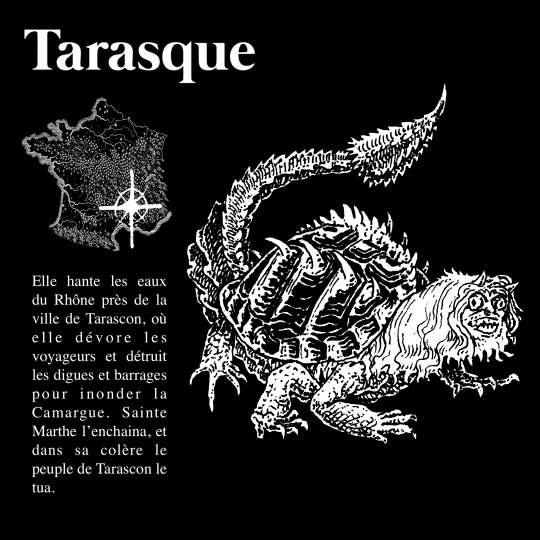
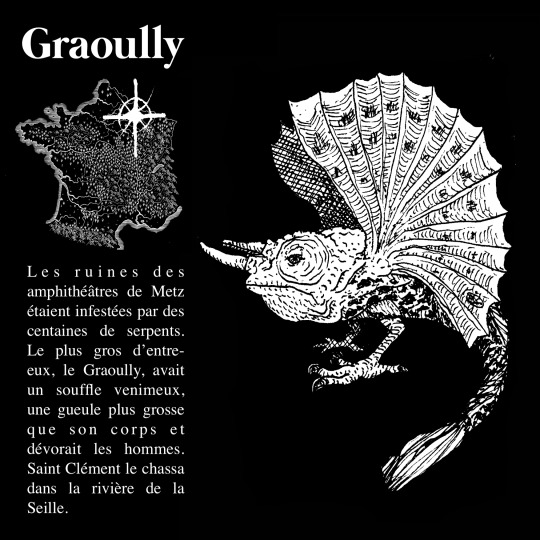

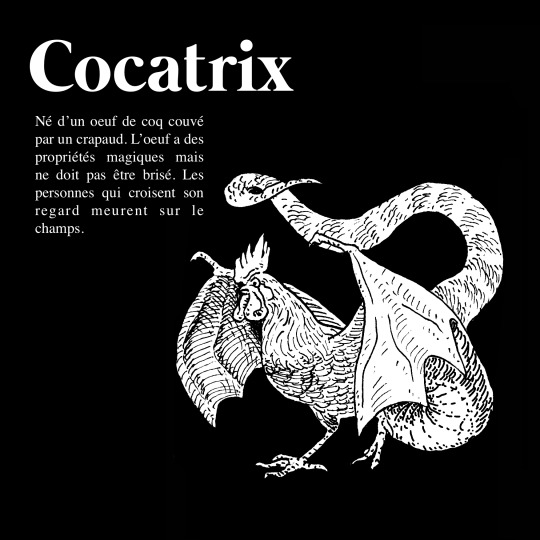
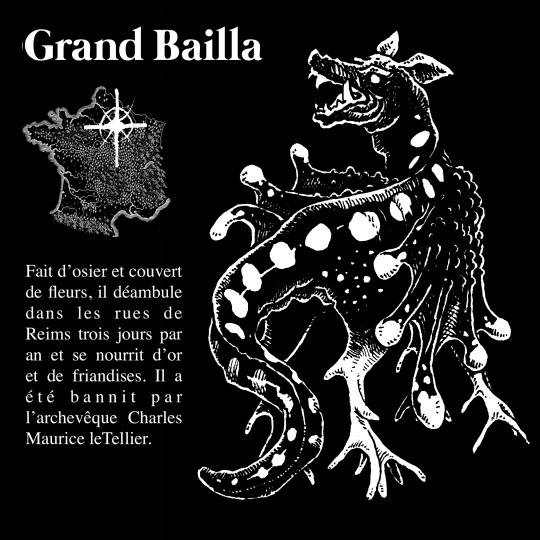

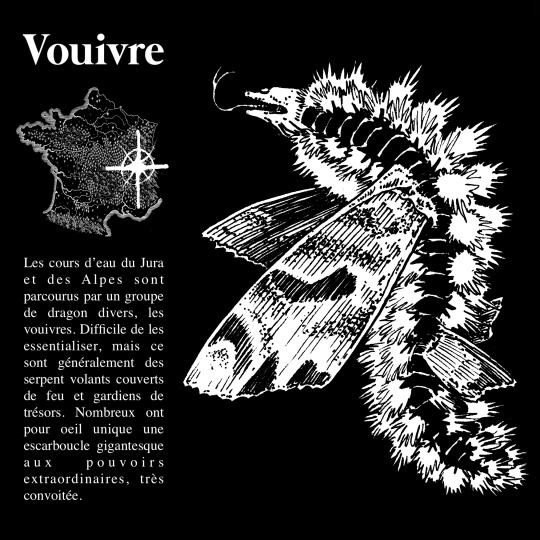
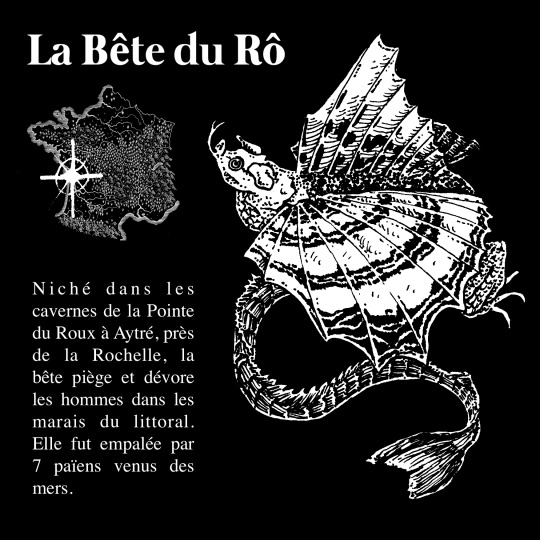
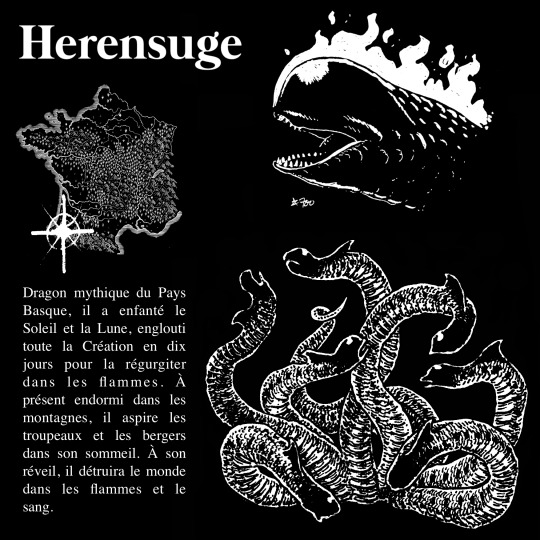
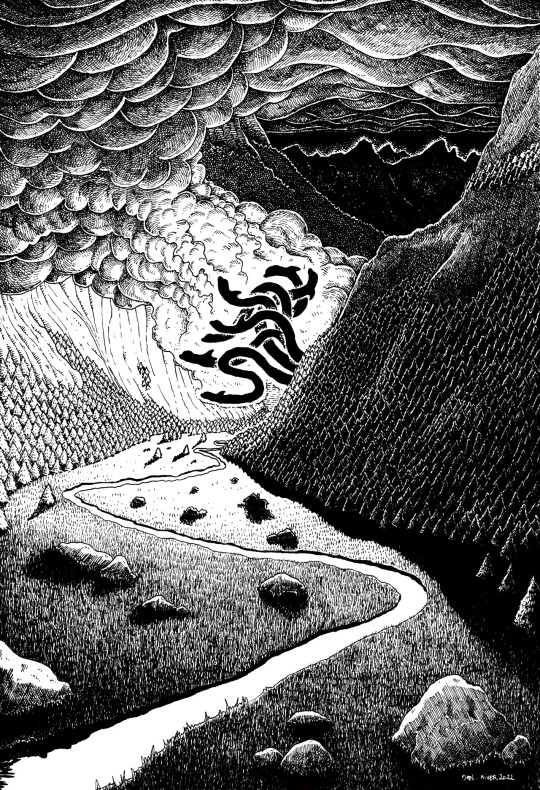

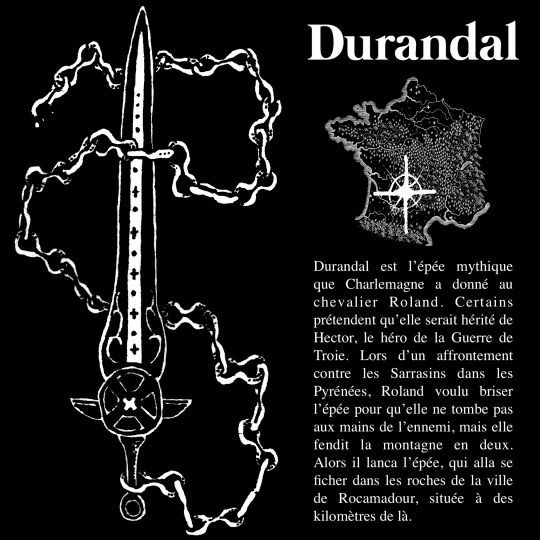
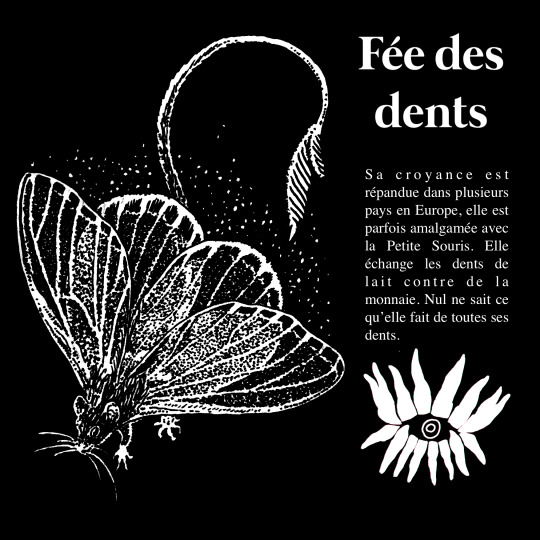

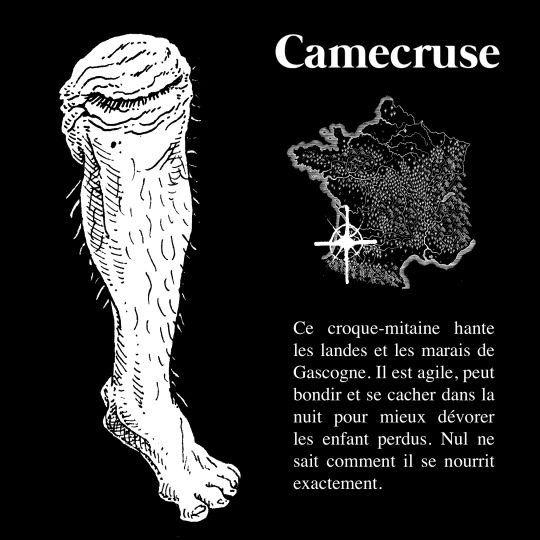


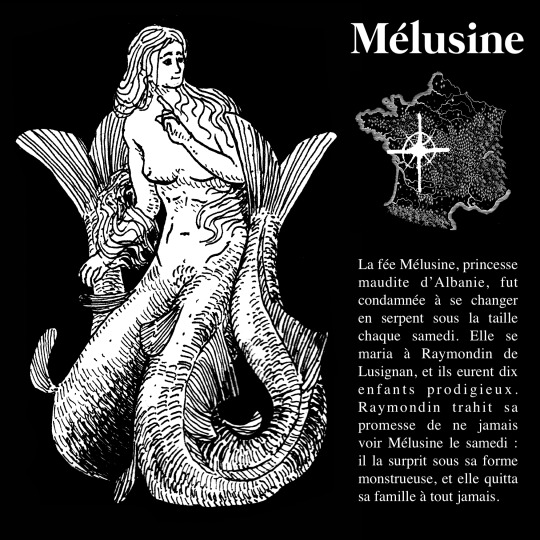
Dragons & Folklore de France
Translation below
The Tarasque dwells in the waters of the Rhone river near the town of Tarascon, where it devours travelers and destroys dikes and dams to flood the Camargue. Saint Martha chained it, and the people of Tarascon killed it.
The ruins of the amphitheaters of Metz were infested by hundreds of snakes. The largest of them, the Graoully, had a venomous breath, a mouth bigger than its body and devoured men. Saint Clement chased it away into the Seille River.
King of serpents, the Basilisk takes many forms throughout history and appears in many tales. One of them takes place at the Gate of Saint-Eloi in Bordeaux, known today for its Big Bell, where a well was occupied by a Basilisk. It petrified with its gaze anyone who went there to fetch water. It was defeated by a man returning from the Egyptian crusade, who petrified the beast with its own gaze using a mirail (mirror).
The Cocatrix is born from a rooster's egg incubated by a toad. The egg has magical properties but must not be broken. People who cross its gaze die immediatly.
Made of wicker and covered in flowers, the Grand Bailla wanders the streets of Reims three days a year and feeds on gold and sweets. It was banished by Archbishop Charles Maurice le Tellier.
The Grand'Goule haunts the marshes of Poitou, the waters of the Clain and the flooded cellars of the abbey of Sainte Croix. It feeds on nuns and casse-museaux (snout-breakers, cakes). Saint Radegonde chased it away with holy water.
In the rivers of the Jura and the Alps there is a group of diverse dragons, the Vouivres. They are generally flying serpents covered in fire and guardians of treasures. Many have for a single eye a gigantic carbuncle with extraordinary powers, desired by those in search of wealth and power.
Hidden in the caves and cliffs of la Pointe du Roux near La Rochelle, the Rô Beast traps and devours travelers in the coastal marshes. It was impaled by seven heroic pagans from the seas.
Mythical dragon of the Basque Country, Herensuge gave birth to the Sun and the Moon, swallowed all of Creation in ten days then regurgitated it in flames. Now asleep in the mountains, it sucks up flocks and shepherds in his sleep. When it wakes up, it will destroy the world in flames and blood. (illustration)
Durandal is the mythical sword that Charlemagne gave to the knight Roland. Some claim that it was inherited from Hector, the warrior of the Trojan War. At war with the Saracens in the Pyrenées, Roland wanted to break the sword so that it would not fall into the hands of the enemy but Durandal split the mountain. So he threw the sword, which went to stick miles away, in the rock of the town of Rocamadour.
The belief in the Tooth Fairy is widespread in several countries in Europe, and is sometimes amalgamated with La Petite Souris (little mouse). It exchanges baby teeth for money. No one knows what it does with all these teeth.
The Camecruse is a bogeyman that haunts the moors and marshes of Gascony. It is agile, can jump and hide in the night to better devour lost children. No one knows exactly how it feeds.
The caves under the hill of the town of Hastingues are home to Lou Carcolh, a monstrous snail, long, slimy and hairy. Its shell is as big as a house. With the help of its tentacles, it grips people to devour them.
The Questing Beast is hunted by kings and heroes in Arthurian legends. It symbolizes evil, incest, violence and chaos, and takes it name from the loud noises that come out of its stomach, similar to the barking of dozens of dogs.
The fairy Mélusine, cursed princess of Albania, was condemned to change into a snake below the waist every Saturday. She married Raymondin de Lusignan with whom they had 10 prodigious children. But Raymondin broke his promise never to see Mélusine on Saturday : he surprised her in her monstrous form, and she left her family forever.
#dragon#monster#creature design#bestiary#folklore#france#mythology#fairy#fairy tale#tarasque#graoully#basilisk#cocatrix#grand bailla#grand'goule#vouivre#Ro Beast#herensuge#durandal#tooth fairy#gargoyles#camecruse#lou carcolh#questing beast#mélusine#chimera
3K notes
·
View notes
Text



The Blue Man of the Minch
#art#illustration#oc#character design#original character#character art#blue man of the minch#merman#ocean spirit#historical#fairy tale#fantasy#sea#beach#scotland#folklore#celtic
3K notes
·
View notes
Text





“Give to this dog son of a wolf a human face, and the result will be Javert.”
I think a lot about the folkloric story that Victor Hugo describes (or invents) in Les Mis, that uses dogs/wolves as a metaphor for that way that Inspector Javert betrays his own social class. It feels very fairytale-like, so here’s a Lotte-Reiniger style adaptation. Many thoughts, many emotions. I may animate this eventually. (And thanks to @valvertweek for the motivation!)
#this is Fate because it’s also about destiny#and it’s Faith because it’s peasant folklore beliefs#it’s on theme#valvert week#Les mis#les Misérables#valvert#‘is it gay’ real fans understand why this is gay#the litter is a Metaphor#anyway: it’s gay#inspector javert#furry javert#fairy tale#fairy tale aesthetic#dark fairy tale#folklore#artists on tumblr#shadow puppets
1K notes
·
View notes
Text



Three more requests! I meant to make them all black&white but well, green knight somehow doesn't work all that well without green 🍀
IX. The Green Knight for romanodegois and @a-gremlin-for-my-thoughts VIII. Otesánek eating his mum for msdearcos who asked for folklore's creature from Czechia VII. for christine.kasparian who asked for spooky fairytale for the autumn season. I chose czech fairy tale Hádanka (Riddle) about this queen who made household items from the bones (and hair) of her lover to take a revenge on his killer.
Enjoy! 💀
#my art#illustration#ink#traditional art#inktober#the green knight#sir gawain#fairy tales#czech folklore#otesánek#folklore creature#čumblr
3K notes
·
View notes
Text
THE LAST WOLF
GUEST EPISODE · WITH SARA PEARL
Storyteller: Sara Pearl Host: Rick Scott

The wind wolves kick up foam flecks from a heaving sea as their hunt hurtles toward the horizon. I wonder: am the last left alive? The thought expands, vast as the lake, vast as the sea, vast as the sky… my mind cannot hold it." This is the tale of the last wolf in England, narrated by the wolf.
The unabridged version of Sara's story is available on Amazon Kindle for £2. A more traditional version of the Last Wolf can be heard in one of our bonus episodes.
ON HUMPHREY HEAD
with Sara Pearl
The train from Lancaster to Kent’s Bank runs over water. I’m reminded of the sea tram in Miyazaki’s Spirited Away, but we leave not a ripple in our wake. The sea sweeps beneath the rails and out the other side in a slick of silver, carving out crescents of sand and seabirds.
At Kent’s Bank, the platform borders high tide. Across the expanse of foam-flecked grey, a rim of dim shapes is visible: Lancaster and a ferry port, watermarks on the clouded horizon. There, across the water to the right, is the forest-furred outline of Humphrey Head.
Though this is the first time I’ve stood within sight of Humphrey Head, I know its plants, wildlife, views, the shape of its coastline in 1577, two centuries’ worth of local travelogues, and kilometres of the surrounding Google Streetviewed roads.
Yet, if you had mentioned Humphrey Head to me in 2017, I would’ve had no clue of its existence.
In spring 2018, I began to track the Cumbrian tale of the last wolf in England (also new to me), poring over worn 19th century travelogues on lectern-shaped cushions in the Rare Books room…
…leafing through a hefty 1978 volume of the Annals of Cartmel while the old timer for the ancient library lights clicked down into darkness…
…perching at a table in a local bakery at 7.30 a.m., zipping from stop to stop along Holy Well Lane via Google Streetview like a speedy virtual superhero…
…scrutinising antiquarian image archives for long-lost maps of the Cumbrian coastline…
…explaining to a patient librarian how a copy of a page from the Ulverston Advertiser from 1853 stored in the British Newspaper Archive would prove to be the clue to unravelling the whole mystery, and how very grateful I was to be holding it in my hand (I’m unsure the queue of readers behind me shared my enthusiasm).
The tale I had set out to find can be traced back to a poem entitled ‘The Last Wolf’ authored by the mysterious “P.” published in the Ulverston Advertiser on Thursday 28 April 1853 (Dr Rick Scott has a copy, if any reader cares to dare the chivalric epic).
On reflection, I pursued the legend with the combined fervour of folktale fangirl and (aptly) dogged detective. This culminated in The Last Wolf story you’ll be able to hear on Lore and Legend in November 2019. I’m still chasing a couple of leads, but case [almost] closed.
So, when I see Humphrey Head across the water, I feel a puzzle piece click into place: this is Humphrey Head in late summer on Sunday 1 September 2019, viewed from the north-east. If the past is anything to go by, this view will look very similar in another two to four centuries; I’m just passing through.
Across the tides of time, Christopher Saxton the cartographer is making measurements here in 1577, the Atkins family are traveling through in 1820, and Edwin Waugh is jotting down lyrical travelogue notes sometime in the mid-1800s…
*
The poem ‘The Last Wolf’ was printed just 3 years after the death of William Wordsworth who, with the Lake Poets, had popularised the Lake District as a place of outstanding natural beauty and literary interest. It is possible that both Atkins’ and Waugh’s Lake District travelogues were inspired by the Lake Poets’ lyrical descriptions of this region. The route of the poem encircles not only a geographical, but also a literary, cultural and historical landscape.
Though the route of ‘The Last Wolf’ seemed improbable, when drawn on a map with calculations of speed and distance, its furthest extent matched the distance a wolf can travel in a day, and the duration of the route corresponded with the distance a wolf can travel in urgency. The anonymous poet P may have been familiar with the endurance of horses or dogs, or have used an historical source in addition to Atkins’ letter. One notable feature of Atkins’, P’s and Mercier’s versions of the tale is the pervasive absence of the titular wolf, which in all three cases appears for just a few lines.
The humans of the Lake District claimed locations by naming them, as in the case of ‘Ulverston’, marking them with an edifice or monument like Wraysholme Tower or Cartmel Priory and creating a visual representation on a map. What did the same terrain mean to the wolf? Zoology and biology reveal that wolves mark by scent and sound, and demarcate territory by patrolling. If we read the route as the wolf’s territory, then every step in the poem represents land being claimed away from one creature by another. A wolf knows the land in ways humans never can: through scent, close to the ground, through intricate soundscapes and personal memories. This intimate knowledge is the wolf’s advantage. However, the wolf lacks the skills of tool-making and the domestication of dogs and horses. For the wolf, the route is demarcated by lieux de memoire similar to those described by Pierre Nora and those traditionally used by Arctic communities for navigation.
My retelling of the legend takes the Ulverston Advertiser’s ‘The Last Wolf’ as its starting point, following the route detailed in the poem. The themes of the poem include the demarcation of land and, as Mercier and Winder note, the fulcrum of an historical moment as an expanding agrarian landscape and lifestyle superseded the nomadic lifestyles of forest-dwelling wolves. In this legend, field is in conflict with forest, wolf with sheep, human with wolf. Mercier places the events of the legend in the fourteenth century, when the English wool industry was expanding and the related increase in the value of sheep flocks increased the expense of wolf-related sheep loss. As Winder notes, the thriving of sheep flocks in wolfless pastureland played a key role in the expansion of the English economy through the international wool trade.
My version aims to counterbalance the poem by imagining the wolf’s voice. In the present context of proposals for the rewilding of wolves in Scotland, the establishment of an Eden Project at Morecambe Bay, and Extinction Rebellion’s description of the fragility of our own human future, this tale is once again relevant to our times. This retelling is not straightforward advocacy - there is no doubt that a hungry wolf can be a hazardous companion for a human and a fatal one for a sheep. I would no more ask a human to cohabit with a wolf than invite a wolf to cohabit with a human.
Notably, P’s poem is a tale in which one wolf outruns all but one of ‘threescore men’ (Ulverston Advertiser, p. 4). Consequently, I started out with one important assumption: the wolf is smarter than me. As I sketched out a relief map of the route, I realised how much strategy of terrain it involved, and turned to Sun Tzu’s The Art of War for tactical advice. The wolf presented in the podcast is a virtual simulation - my model of data from various sources run through the narrative and geographic parameters outlined by the poem. I expect my model to fall short of the experiences and observations of people who work with wolves every day and apologise for the limitations of my research, knowledge and skill.
*
Having memorised the maps, landscape and travelogue accounts, Humphrey Head had became a place I felt I knew well. So, when passing by, I made a detour to read the land with my feet.
One must carefully cross train tracks to reach the village of Kent’s Bank. On the land side, a neatly-painted hut houses box seats, a tiny library and a display telling the story of Dennis Philips, who grew up here to become the youngest Station Master in the UK in 1956 and the final Station Master of Kent’s Bank. In melancholy contrast, the display records that no one now remembers the name of the porter who stands beside him, smiling in the ‘best kept station’ award photo. The tides of time reach further than the sea.
The station incorporates a small but airy whitewashed art studio filled with stained glass sun catchers and glazed ceramics. I ask directions of the gentleman supervising this Sunday afternoon.
Following the described route, the tarmac road climbs through woodland, up past well-appointed peak-roofed houses and bungalows with carefully tended gardens, to the crossroads at the edge of Kent’s Bank. From there, left down the steep and winding Jack’s Hill, passing sunflowers and a neat subterranean garage. Scattered houses spread out below, and a party of Nordic walkers marches by in full mountain gear, stopping to assure me this is the right direction.
Left again, through what appears to be a shared backyard, and down into a neat woodland avenue. Sunlight dapples the pale mud track, patterned with puddles and leaves. It is a tunnel of trees, the end a perfect circle of landscape, like a painted miniature.
Beyond this circle is an expanse of late summer sky. Left again, onto a well-kept tarmac track. Through a gate, I glimpse Humphrey Head, larger now. The afternoon sun adorns the roadside with a lace of leaf-shadows. The hedgerow is bright with harvest: thick clusters of green, red and blackberries, umbrellas of bright elder, pastel flowers. Above, the sky is soothing blue, floating motionless cotton wool clouds. Pastureland smoothly undulates to either side, a quilt stitched together with woodland. Sheep drift sleepily from pasture to pasture, mirroring the clouds.
Wraysholme Tower, squat and square, now incorporated into a farmhouse with cattle fields, caps a low rise to my left. The drive is gated off. Turning a curve in the road, I watch three unlit warning lamps and cross a railway line, deserted. Fields stretch in every direction. The sun catches the clouds with the brightness of a gleam through glass. Humphrey Head is clearly visible now, rising above the hedgerows. Tall old wooden telegraph poles run along the road; plain staves of wood with no footholds or fastenings, the wire simply looped and hooked at the top. This straight stretch of road continues all the way to the horizon, like the archetypal road of the American desert. I put one foot in front of the other, patient under the sun. One step becomes one thousand. Tall red grasses rustle above the hedgerow, feathered in the breeze.
At the end of the road, an old wooden signpost to Humphrey Head - the only one on the route - points right. The rise begins to sweep upward to my left, and a more modern sign notifies me of an upcoming left turn to Humphrey Head Outdoor Education Centre. I take it, climbing the grassy slope - and find myself on the gently rising back of the ridge.
Wading through long glossy grass, I pass embedded outcroppings of limestone, climbing upwards and upwards, passing grazing cows and hunched hawthorns, up and up, seeing the sinking sands of Morecambe Bay stretched, etched and mirror-bright to the right; emerald patchwork pastures spread out behind me; and a thin mane of woodland rising to the left. The curve of a rainbow crosses the distant rainclouds beyond.
The view is extraordinary - wisps of cloud catch the light like lantern flames. The low sun of a late summer afternoon sets the bay ablaze. Lone hawthorns curl sculpturally, clawing at the wind. A basic fence - simple staves and wire again - keeps walkers from sliding down the righthand slope into Holy Well Lane. The wind from that direction is extraordinary - a relentless, roaring, body-buffeting force hurling in from the sea. The tide has carved sinuous paths and channels into the bay. I wonder whether these change every day, demarcating a new map each time.
A herd of cows have braved the wind to graze along the ridge. The honey-coloured light of a sinking sun stretches the shadows further and further.
At the apex of Humphrey Head is a trig point (S5589). I realise now why Atkins and P favoured this as the vantage of the wolf - one can see for miles around, looking down at a living map, and the climb itself is not particularly onerous; a leisurely afternoon stroll rewarded with a disproportionately great view.
The outcroppings of rock are pale in colour and chalky in texture, with patches of dark grey and bright orange-yellow xanthoria parietina lichen. The water in one hollow is rust-coloured, but there is no trace of the rust marks from oxidised iron ore one would expect from deposits of the hematite famously found nearby in Barrow-in-Furness. I wonder whether the water is coloured by the lichen, which can be used as a pink dye.
Down the rocky ridge, the headland promontory extends into the tidal plain. A family are there, and seem to be watching an otter at play. Looking from the map on the wooden exit gate to the sands, I realise Holy Well Lane is flooded with a fast-flowing river of water, and call out to ask the family whether they can see the road from their position. The grandfather confirms it is flooded out. There is only one route back - over the ridge again - and no chance of seeing the Holy Well today. I climb a short way onto the rocky shelf above the fast flood, careful to keep safe footing, and to avoid stepping on what appears to be long grass but squelches alarmingly underfoot - there are numerous quicksand warnings in this area (in a yellow triangle, a tiny figure waves urgently while sinking below a black line).
Back over the ridge again. The family spin a frisbee across the blue and green of sky and land. The grandfather points out to me the distant cockle-picking tractors, who set out at low tide to scavenge the sands. I remember the cockle-pickers encountered by the Atkins family in Briggs’ Remains, more than a hundred years ago, and the more recent tragedy of the tides in Morecambe Bay. As the sun sets, shadows stretch across the grass, across the road, across the dirt track and Jack’s Hill - over which I struggle, but determinedly prove Nordic walking poles unnecessary - all the way across Kent’s Bank into evening, and later into night.
There is a preoccupation with and deep pride in the past at Kent’s Bank Station, Grange-over-Sands and Lancaster. Grange, particularly, has the air of a recently out of season Victorian seaside resort, with faux Norman arches in the station walls and elaborately swirling ironwork in bright heraldic shades (today, très steampunk). Standing under these arches, it does not seem strange for a faux-medieval poem to provide a frame narrative for the view from Humphrey Head, which may have been popular with the many 19th century visitors to the Lakes (it’s certainly the type of walk one could complete in a crinoline).
As the tide rolls out from the coastline of Kent’s Bank and Grange, it reveals a sometime undersea expanse of long grasses stretching all the way to the tideline; a perilous and temporary land of sinking sands.
*
For three days after finishing the recording script for Last Wolf, while battling ‘flu, I was haunted by the final scene:
It is like this: I am standing barefoot on the beach. The only sounds are the sound of the sea and a soft, high keening. The half-moon, high now, frosts waves inseparable in darkness from the sky. To the left, at the tideline, the hunter bends over the body of the wolf, wary, leaning heavily on his spear. To the right, by the rise, the one-eyed dog whines at the side of his companion, whose breath squeezes out in feeble wheezes. Further back, at the base of the cliff, the white hide of the horse spasms.
Around them, the night is quiet, calm and peaceful, and it feels like it shouldn’t be. It feels like there should be shouts or tears or protests, cortisol and adrenaline — some kind of noise, avalanche, tsunami, the clamour of disaster. But there’s just the breeze that brushes my arms and stirs my hair, cool salt and the sound of sea.
I wonder whether I told it wrong, whether that’s why I can’t leave. But this is the tale: of an ordinary day, in which terrible things happened. The protests are removed — they don’t occur here at this time, but in another place, centuries later. They can’t reach the casualties here. Would it make a difference to them, here, if they knew they were mourned by people whose hands can’t help them, whose voices can’t comfort them? But our only human representative here is the hunter, leaning on his spear, curved like the moon over the corpse of a creature he’s still too scared to touch (maybe it’s only playing dead). He doesn’t know this is the last wolf. He won’t realise until months or years later, and then won’t really care — except that it increases his fame. His colleague has already ridden home, ahead of the dark.
After a while — is the hunter counting the waves? — he will poke the corpse tentatively with his stick. Then roll it over. Monochrome in moonlight, it is clearly inanimate, stiffening. It was the wind, flickering in its fur, that frightened him. The eyeless dog limps from him to its companion, whining urgently, and this reminds him of the cold, that he is stranded, his aching, bruised and battered limbs, the long walk home. He looks at the horse — regretting, now, his recklessness? But he is determined. He staggers, slings the still-warm wolf over his shoulder. Its weight heats his back, shielding him from the cold. He remembers carrying his grandmother like this, some time before she died. Anchoring each step with his stick he follows his hound to the fallen one, sees it will not survive. What does he do then? In the morning, the tide will slide both horse and dog into the sea, after the peregrine feeds.
The hunter walks from the beach, slowly, painfully, stumbling, the hound’s high cry rebuking him, through the high grass, the billowing wind, step by step through the strange nocturnal world, accompanied by the inexorable moon. Gold points across the plain widen into planets, spheres, window panes. And he walks to the gate and the gatekeeper is silent, awed, shocked speechless. And he walks across the torchlit courtyard and through the muddy straw-strewn yard and under the archway, through cool halls which resound with the sounds of riotous feasting and abandonment. His slow steps echo, forgotten. And he enters, unnoticed at first, and then a hush spreads out, and out, and out… and there is only silence… and then a roar.
But I do not elect this representative. So I am on the beach, where I cannot leave her, standing in a frozen moment.
‘Vigil’, one calls it. Mourning ’til morning.
Now, having named it, I settle cross-legged on the sand, understand, and see the sun rise at last. I realise I am cold, damp with sea spray, and sand-sore… and I can leave the scene.
*
I catch the train back toward Lancaster in rain - sea and sky submerged in mist - and watch tiny seabirds shelter from the wind in wave-carved ripples of sand. The sea has the last word here, writing its story onto the land, erasing and writing again.
*
Here are a few pieces of flotsam and jetsam found on the shores of time, circa 2018-19:
—In 1538 the first Guide to the Sands of Morecambe Bay was appointed. This role survives today: http://www.guideoversands.co.uk/history/ and https://www.theguardian.com/uk-news/2019/apr/12/sands-of-time-run-out-for-queens-guide-to-morecambe-bay
—In 1577, a cartographer named Christopher Saxton published a map of Lancashire. On surviving copies of this map, Humphrey Head is clearly marked, though the shape of the sands and tideline are a little different to those on Google Maps 2019.
—In 1820, Leonard Atkins, in the company of his sister and uncle, travelled around the Lake District describing their journey via letters to his brother Tom, who was studying at Cambridge. Atkins included two stories from his uncle: ‘Wraysholme Tower' and ‘The Last Harrington’. These letters were later published in the Lonsdale Magazine, edited by John Briggs, and collected in The remains of John Briggs (1825).
—In 1825, the widow and friends of John Briggs published a compilation of The remains of John Briggs: containing Letters from the Lakes; Westmorland as it was; Theological essays; Tales; Remarks on the Newtonian theory of light; and Fugitive pieces / to which is added a sketch of his life, including Atkins’ letters.
—On Thursday 28 April 1853, the Ulverston Advertiser published a poem entitled ‘The Last Wolf’ by the mysterious “P.”.
—In 1864, Edwin Waugh included the same poem entitled ‘The Last Wolf’ by an anonymous author in his book Rambles in the Lake Country and its Borders.
—On Thursday 5 June 1873, the poem ‘The Last Wolf’ was reprinted by the Ulverston Advertiser.
—In 1884, Mrs Jerome Mercier used the narrative of the poem ‘The Last Wolf’ as a frame for a Christian romance novel for young readers.
Since Mrs Mercier’s The Last Wolf in 1884, this Cumbrian tale has fallen out of favour, though the title ‘The Last Wolf’ has been used in English by writers including Jim Crumley, MacGillivray, Mini Grey, László Krasznahorkai, Margaret Mayhew, Michael Morpurgo, David Shaw Mackenzie, David Stephen and Robert Winder. As Jim Crumley notes in his excellent exploration of wolves, last wolf tales proliferate. Creative works with this title can be found in Spanish ‘el ultimo lobo’, in French ‘le dernier loup’ and in Simplified Chinese ‘最后一���狼’. There is perhaps a fascination with the wolf viewed from a human perspective, with uniqueness and loss.
Bibliography
—Anon.,‘The Last Wolf’, in Soulby’s Ulverston Advertiser and General Intelligencer [newspaper] (Ulverston: 28 April 1853 and 5 June 1873), The British Newspaper Archive [online archive]. https://www.britishnewspaperarchive.co.uk accessed May 2019.
—Bravo, Michael, North Pole: Nature and Culture (Reaktion Books, 2018)
—Briggs, John, ‘Letters III’, The remains of John Briggs: containing Letters from the Lakes; Westmorland as it was; Theological essays; Tales; Remarks on the Newtonian theory of light; and Fugitive pieces / to which is added a sketch of his life (Kirkby Lonsdale: A. Foster, 1825) pp. 35-39.
—Cumbria County History Trust, ‘Old Maps of Cumbria Gallery’ [online gallery] (2018). https://www.cumbriacountyhistory.org.uk/gallery/old-maps-cumbria-gallery accessed 10 December 2018.
—Google, ‘Cumbria’, ‘Humphrey Head’, ‘Kirkhead', ‘Holker’, ‘Newby’, ‘Leven’, ‘Torver’, ‘Coniston Old Man’, ‘Esthwaite’, ‘Sawrey's Pass’, ‘Windermere’, ‘Gummerhowe’, ‘Withels Lack’, ‘Aggerslack’, ‘Grange’, Google Images [online image repository] (2018). https://www.google.com/imghp?hl=en accessed 21 December 2018.
—Google, ‘Humphrey Head’ (street view), ‘Cartmel’ (street view), ‘Kirkhead’ (street view), ‘Holker’ (street view), ‘Newby’ (street view), ‘Leven’ (street view), ‘Torver’ (street view), ‘Coniston Old Man’ (street view), ‘Esthwaite’ (street view), ‘Sawrey’s Pass’ (street view), ‘Windermere’ (street view), ‘Gummerhowe’ (street view), ‘Withels Lack’ (street view), ‘Aggerslack’ (street view), ‘Grange’ (street view), Google Maps [online map] (2018). https://www.google.com/maps accessed 21 December 2018.
—Harris, Michelle, and Hughes, Brian, ‘Saxton’s Map 1577’, The Fylde & Wyre Antiquarian [website] (30 May 2007). http://wyrearchaeology.blogspot.com/2007/05/saxtons-map-1577.html accessed 10 December 2018.
—Mercier, Mrs. Jerome, The last wolf: a story of England in the fourteenth century (London: Society for Promoting Christian Knowledge; New York: E. & J. B. Young and Co., 1884).
—Norgate, Jean, and Norgate, Martin, ‘Saxton 1579: Map, hand coloured engraving, Westmorlandiae et Cumberlandiae Comitatus ie Westmorland and Cumberland, scale about 5 miles to 1 inch, by Christopher Saxton, London, engraved by Augustinus Ryther, 1576, published 1579-1645’, Guides to the Lakes [website] (2014). http://www.geog.port.ac.uk/webmap/thelakes/html/saxton/sax9fram.htm accessed 10 December 2018.
—Stockdale, James, Annals of Cartmel (Beckermet: Michael Moon, 1978) pp. 5-20, 141-160.
—Sun Tzu, The Art of War (Filiquarian: November 2007; first published circa 5th century BC).
—Waugh, Edwin, ‘Over Sands to the Lakes: Chapter the Second’, Rambles in the Lake Country and its Borders (Manchester: John Heywood, 143, Deansgate; London: Simpkin, Marshall, and Co., 1864) pp. 77-83.
—Winder, Robert, ‘Peter and the Wolf’, The Last Wolf: The Hidden Springs of Englishness (London: Little, Brown, 2017) pp. 1-11.
#cultural legends#folklore history#legendary creatures#folktales and legends#folklore podcast#folklore tales#ancient legends#fables and legends#folklore storytelling#spotify#folklore#mythology#audio drama#fantasy#folk horror#podcast#storytelling#supernatural#legends#dark fantasy#horror#mystery#adventure#fiction#folk tales#creatures#folk music#worldbuilding#magic#enchanting
0 notes
Text




Postcards from the series "Fairytale types" (early 20th century)
Vasiliy Vladimirov (1880-1931)
#Россия#Russia#vintage#postcards#русский художник#russian artist#artist#Василий Владимиров#Vasiliy Vladimirov#русская культура#russian culture#culture#postcard#русское искусство#russian art#art#русские сказки#russian fairytales#fairytales#русский фольклор#russian folklore#folklore#russian fairy tales#fairy tales#russian#20th century
832 notes
·
View notes
Text
Vasilisa and Baba Yaga
Guys, a new game based on the Russian fairy tale Vasilisa the Beautiful has recently been released.
It's an adventure with gorgeous visuals and great music. Just look at this:


The story is basicaly retelling of the fairy tale "Vasilisa The Beautiful", so if you haven't read it yet, this game is a great way to familiarise yourself with the tale.
The gameplay is a little bit clunky, but it's still a great experiance for an evening, try it.
You can find the game in Steam: Vasilisa and Baba Yaga
youtube
#russian#slavic#russian folklore#russian tales#русский фольклор#games#russian games#video games#slavic mythology#recommendations#game recommendations#indie game#baba yaga#баба яга#vasilisa#vasilisa the beautiful#василиса прекрасная#baba yaga games#tales#Youtube
454 notes
·
View notes
Text
I find it interesting that people talk and write about fairies these days like they're these horrible, Machiavellian monsters that you mustn't ever risk dealing with. Even saying your name near them will forever put you in their thrall, forever! (Or something to that effect) But when you dig into the folklore, you find countless stories of fairies just getting dunked on in just the daftest ways.
I've been reading "The Lore of Scotland", by Jennifer Westwood and Sophia Kingshill, and when I noticed this trend, I started taking count of who wins in fairies vs. human confrontations. I'm only about a fifth through, and while it's not clear cut, the humans are winning by three points!
By way of example, let me tell you one of my favourite stories so far. Once upon a time, a young woman was abducted by the fay and carried away to a fairie mound. There, she was placed in the arms of the great fay giantess who ruled those halls. "I've got you now!" said the giantess, "I'm going to hold you as tight and as close as vine on tree, forever more!" Certainly in a pickle, the young woman considered her dire situation and simply replied, "I wish it was shit you were holding." The fay giantess was so completely appalled and disgusted by the coarse manner of the young woman that she let her go immediately and had her taken back to her home.
Not only do I find this really funny, I enjoy the fact that even centuries ago, the forthright manner and direct problem solving of Scottish women was well established.
1K notes
·
View notes
Text

Gabriel Ferrier (1847-1914) "Little Red Hiding Hood"
#paintings#art#artwork#literary painting#little red riding hood#gabriel ferrier#fine art#french artist#female portrait#portrait of a girl#wolf#wolves#animals#folklore#costume#costumes#bread#food#curly red hair#fairy tail#fairy tale#fairy tales#1800s#19th century#1900s#20th century
890 notes
·
View notes
Text
River spirit keeps trying to draw me into morally instructive allegories, but I keep pointing out that no answer I can give would fulfill the purpose of the exercise because I've already read this one. Hoping they can think of one I've never heard of before they get fed up and just eat me instead.
658 notes
·
View notes
Text

𝙷𝚒𝚍𝚎 𝚊𝚗𝚍 𝚂𝚎𝚎𝚔
#art#artists on tumblr#artshare#ukrainian art#ukrainian artist#support ukrainian artist#ukrart#украрт#украртпідтримка#український tumblr#український тамблер#укртамблер#commissions open#horror#horror art#horror illustration#birch#birch trees#mythology#mythology and folklore#folklore#fairy tales#illustration#procreate
607 notes
·
View notes
Text
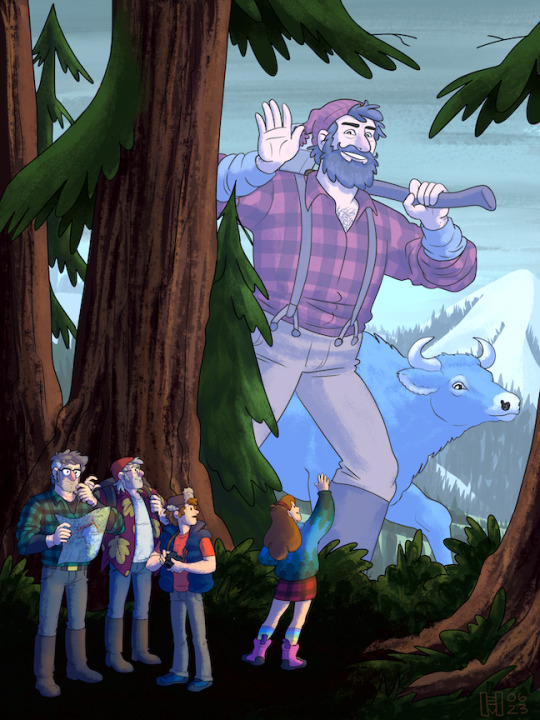
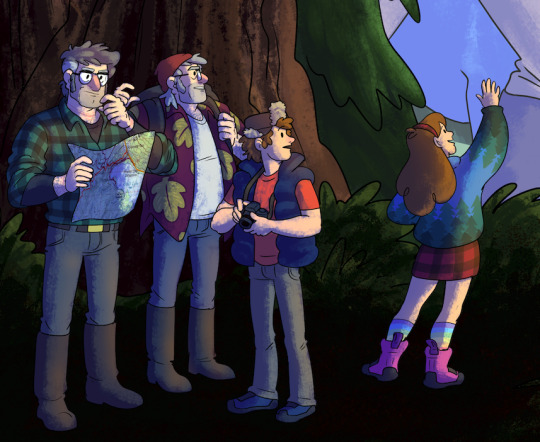
HAPPY PAUL BUNYAN DAY!
Not sure what the Pines were looking for on their hike, but running across a couple of legends is a nice bonus!
Aside from the iconic statue in the town of Gravity Falls, and the OTHER iconic statue at Mystery Mountain, I was always intrigued by the little side about Stan invoking Paul Bunyan in his hour of need. (And really, given how they defeat Darlene, ol' Paul came through in the end. In a manner of speaking!)

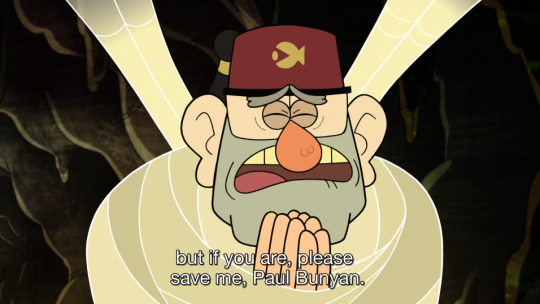
#gravity falls#stanford pines#stanley pines#mabel pines#dipper pines#paul bunyan#babe the blue ox#tall tales#folklore#paul bunyan day#happy paul bunyan day!#my art#ids in alt
4K notes
·
View notes
Text

Gamayun in Captivity
#artists on tumblr#illustration#dark forest#dark tales#alexandra dvornikova#digital art#slavic folklore#dark folk#gamayun bird#magical#apple art#bird in a cage
240 notes
·
View notes